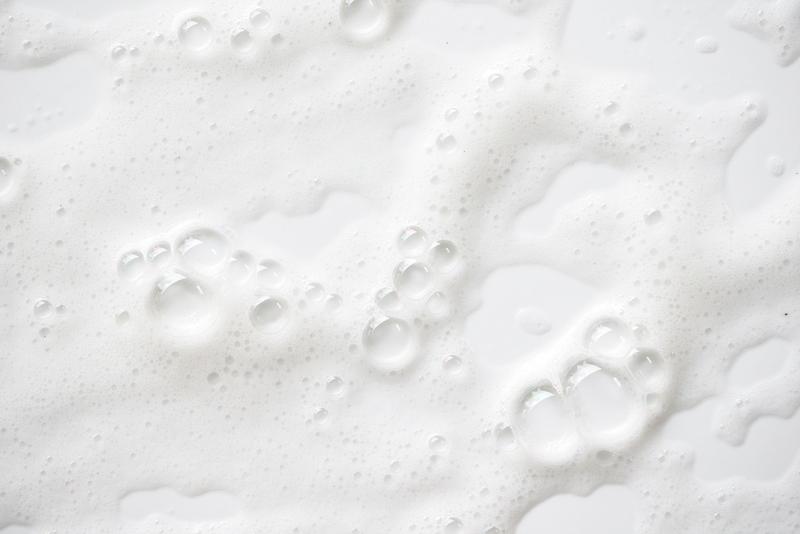Every day, we’re exposed to chemicals and toxins that can disrupt our endocrine system. Endocrine Disrupting Chemicals, or EDCs, are found in many everyday products, including some plastic bottles and containers, food-can liners, detergents, toys, cosmetics, and pesticides.
While hormones are most often associated with puberty, pregnancy, and menopause, they also influence and control a wide range of physiological activities such as growth, development, regulating sugar levels and body temperature, bone growth, appetite, metabolism, and energy levels.
When EDCs disturb our hormones, our health can seriously suffer.
EDCS are linked to infertility, endometriosis, early puberty, altered nervous system function, immune function, certain cancers, respiratory problems, metabolic issues, diabetes, obesity, cardiovascular problems, growth, neurological and learning disabilities, and more.
Other areas include:
- Response to psychological stress
- Neurological and behavioral changes
- Reduced ability to handle stress
- Reproduction: Some classes of EDCs (DDT, BPA, phthalates, PCBs, others) can affect reproductive health by mimicking or blocking the effects of male and female sex hormones
- Growth and development: High exposures to EDCs during gestation can lead to low-birth weight, altered development, disrupted sexual development, weakened immune system
- Cancer: Exposure to estrogen or androgen mimicking EDCs can promote breast and prostate cancer growth and/or interfere with hormonal cancer therapy
- Prenatal exposure to some EDCs may after mammary gland development and increase breast cancer risk later-in-life
We’re constantly bombarded with hormonal manipulators. They’re everywhere.
It is possible to detoxify your life by taking steps to reduce your chemical body load, or the amount of chemicals in the body at any given time.
In this post, you will learn about five simple steps that everyone can take to reduce their chemical body load.
- Simple Swaps
- Eat Organic
- Remove Your Shoes and Outerwear When You are Inside
- Check Your Plastics
- Get Some Fresh Air
We want to empower you to take control of your health by providing you with the knowledge, tools, and confidence to navigate living a cleaner lifestyle.  One of the best ways we know how to do this is by taking small steps every day that can make a big difference.
Keep reading to understand how you can reduce your chemical body load in order to live a healthier and happier life!
1. Simple Swaps
In the coming weeks, we’ll be breaking down each Hugh & Grace product in a series called Simple Swaps, where we will recommend creative ways you can substitute Hugh & Grace products in place of products that have high toxin counts.
When you use your Hugh & Grace products in place of products that have high toxin counts, you can drastically reduce your exposure to harmful EDCs.  Using fewer products in your routine will minimize the number of unique chemicals you expose yourself to, and it will save you money. Oh, and the environment will thank you too!
To kick-off our Simple Swap blogs, we’re challenging you to switch out just 3 products for Hugh & Grace products.
Toss your moisturizers and start using our Restoring Face Serum and Protecting Body Oil.
Your body and face washes? You can get rid of those – our Purifying Cleansing Bar is a fantastic substitute for both.
For a bonus swap, go ahead and replace the liquid hand soaps or any bars of soap on your bathroom counters with the Cleansing Bar too!
These 3 small, Simple Swaps will reduce your chemical body load, helping you achieve a healthier and cleaner life.
2. Eat Organic
When you reach for the organic (and let’s be honest, pricier) strawberries in the grocery, what are the benefits?
It turns out that the extra dollar or two you’ll spend on organic produce could contribute to lower medical bills in the future for you and your family.
Many pesticides are EDCs and have been linked to learning and behavioral problems, autism, leukemia, Parkinson’s disease, thyroid issues and hormone disruption.  Avoiding them by shopping for organic foods should be one of your top priorities in the grocery store, especially if you’re raising a family.
Pesticides are designed to be toxic to pests’ nervous or reproductive systems and may act by disrupting endocrine systems. Such chemicals are also EDCs because of the similarities between insect and animal endocrine systems.
Chlorpyrifos, an insecticide used in commercial agriculture, is a potent neurotoxin that causes developmental delays, attention problems, and ADHD in children. The United States banned its residential uses in 2000, and the effect was immediate: children’s blood levels of chlorpyrifos in New York declined significantly in one year and were reduced to less than half in two years.
DDT, one of the best know pesticide EDCs, was used extensively worldwide until it was banned in the 1970s by several countries, including the United States. Emerging evidence suggests that exposure to this neurotoxin might be associated with breast cancer, preterm bitch, early pregnancy loss, reduced semen quality, disrupted menstruation, and problems with lactation.
To make shopping for organic foods more affordable, focus on the top 15 foods with the highest levels of pesticides identified by Friends of the Earth: apples, wheat, strawberries, pears, grapes, lettuce, nectarines, peaches, bread, bran, biscuits, tea (imported), barley, tomatoes and apricots.  If you are eating conventionally farmed meat, trim it, as many toxins are stored in the fat.
Many of these organic, plant-based foods support the liver, kidneys, and digestive tract, which aids in detoxing the body. Foods like dandelion, parsley, cilantro, turmeric, wheatgrass, and m ilk thistle all help to support the liver: the key organ for detoxification.
Bonus Tip – Drink lots of warm water throughout the day, since water is critical for flushing out your organs.
3. Remove Your Shoes and Outerwear When You are Inside
When you’re outside, you can pick up loads of toxins and EDCs that stick to your shoes and outerwear.  Also, endocrine disruptors are very stable. In other words, they don’t break down quickly, which is why many manufacturers include them in products in the first place.
Of course, it also means that endocrine disruptors stick around in water, air, soil, and our bodies for a long time.
Throughout the course of a day, you may have walked on roads splattered with engine oil, grass verges sprayed with pesticides, lead-contaminated dirt, and countless other harmful chemicals in our environment.
All this collects on your footwear and enters your home as dust.  Nicole Bijlsma, naturopath, building biologist and author of Healthy Home Healthy Family, says you can reduce the dust levels in your home by 50 percent simply by removing your shoes before entering.
Keep your jackets, shoes, and other outerwear that you use daily stored in a closet near the entrance of your home to reduce the number of toxins in the air and on surfaces.
4. Check Your Plastics
The American Academy of Pediatrics report, published in the August 2018 issue of Pediatrics, contributes to a growing body of evidence that plastic not only negatively impacts the environment, but it can also negatively impact human health.
According to the report, “Rapidly accumulating scientific evidence suggests that certain chemicals added during the processing of foods and those that may come into contact with food as part of packaging or processing may contribute to disease and disability.â€
The AAP also reported that children are at particular risk when they are exposed to these chemicals, stating that “The potential for endocrine system disruption is of great concern, especially in early life, when developmental programming of organ systems is susceptible to permanent and lifelong disruption.â€
The truth is, not all plastics are created equally.  The next time you use a plastic container or bottle, you might want to look at the little number inside the triangle recycling symbol.
The American Academy of Pediatrics states that plastics with the recycling codes 3 (phthalates), 6 (styrene) and 7 (bisphenols) should be avoided unless they are labeled as “biobased†or “greenware,†which do not contain these chemicals.
- Plastic No. 3—used in plumbing pipes, clear food packaging, shrink wrap and more—contains the phthalate DEHP, which has endocrine-disrupting properties.
- Plastic No. 6, aka Styrofoam, can leach styrene, a suspected carcinogen, especially in the presence of heat.
- Plastic No. 7—or hard plastics—is likely to leach bisphenol A (BPA) and/or biphenol S (BPS), which are known endocrine disruptors.
The AAP also warned that plastic should not be heated in microwaves or placed in dishwashers, as the heat can cause chemicals to leach into food.
Use alternatives to plastic, such as glass or stainless steel, when possible. However, you are seduced by the convenience of plastic, just make sure to follow these steps to reduce your exposure to harmful EDCs.
5. Get Some Fresh Air
Air-fresheners, perfumes and personal care products such as shampoo, body lotion and deodorants often contain EDCs called Phthalates that help the smell to linger.
Phthalates are endocrine disruptors that mimic estrogen and have been linked to early puberty, cancer, birth defects and other developmental issues.
Manufacturers are not required to list all the ingredients used to make their fragrances, which means you as a consumer have to be extra cautious when you shop unless consumer products are explicitly labeled as hormone-safe or free of EDCs.  To protect yourself, avoid any personal care or cleaning products that list “fragrance†or “parfum†in the ingredients.
We highly recommend opening your windows to let fresh air in. You can also put oranges peels in the garbage disposal or set a cup of coffee beans or grounds out to get rid of odors.
Another great way to detox the air in your home is by adding plants like the Peace Lily, which absorbs pollutants such as formaldehyde (found in carpeting) trichloroethylene (found in plastics), benzene (found in paints), xylene (found in adhesives), toluene & ammonia.
The Peace Lily also removes acetone, which is commonly used to make plastic and fibers. Acetone is also found in tobacco smoke and car exhaust, which could be present in your home environment.  If you have pets or small children, you’ll want to keep this plant out of reach as it is toxic if consumed.Â
Exercise has been shown to enhance adipose tissue circulation and therefore increases the release of stored toxins.  Cardiovascular exercise also supports detoxification through sweating. Start with gentle, but regular, forms of exercise outside, such as walking or bicycling for 30 minutes or more per day.
We hope you’ve enjoyed learning 5 simple steps you can take to reduce your chemical body load!


